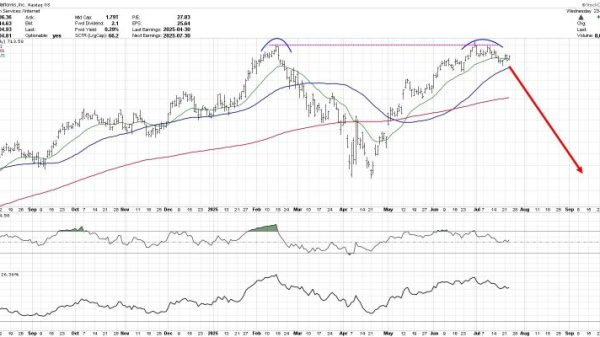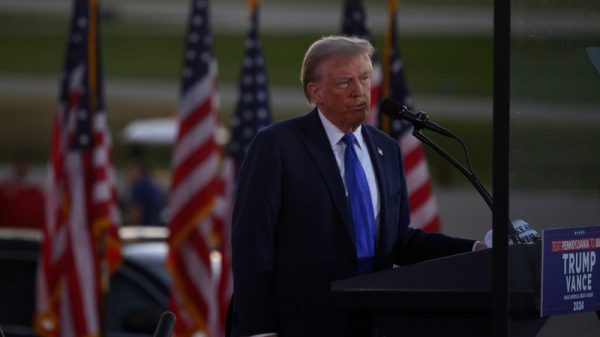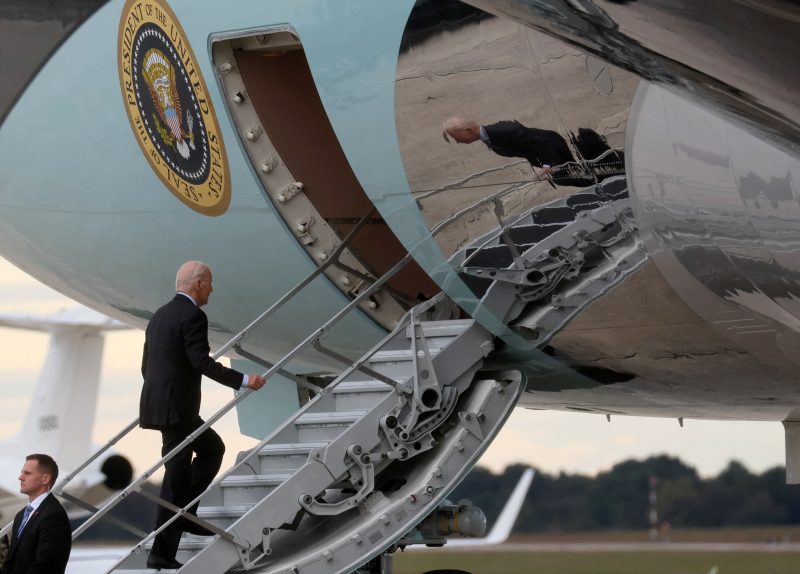President Biden arrived in Israel on Wednesday, flying into an active war zone where hostilities are high and the course and breadth of the war between Israel and Hamas remain extraordinarily unpredictable.
Israel and Hamas have exchanged fierce rocket fire and aerial strikes since Palestinian gunmen from Hamas stormed through the Israel-Gaza border on Oct. 7 and launched the deadliest terrorist attack in Israel’s history, killing more than 1,400 Israelis. Israel has launched an aerial counterattack that has killed roughly 3,000 people in Gaza and incited outrage across the Middle East.
Adding to the risks of Biden’s trip was a deadly explosion at a Gaza hospital on Tuesday that killed at least 500 people, according to the Palestinian Health Ministry. Palestinian officials say an Israeli airstrike hit the hospital courtyard where displaced Gazans were taking shelter, while the Israel Defense Forces blamed an errant rocket from the Palestinian Islamic Jihad militant group, saying “a barrage of rockets” was passing near the hospital when it was hit.
The hospital blast has set off fierce protests in the Middle East, including in Jordan, where the Israeli Embassy was surrounded by protesters Tuesday evening. A planned visit by Biden to Amman on Wednesday was canceled after the strike, forcing the U.S. president to forgo a scheduled meeting with Jordanian King Abdullah II, Egyptian President Abdel Fatah El-Sisi and Palestinian Authority President Mahmoud Abbas.
A White House official said Biden “looks forward to consulting in person with these leaders soon, and agreed to remain regularly and directly engaged with each of them over the coming days.”
Some security experts said the physical risk to Biden would be relatively small despite the chaos in the region. Biden is one of the most protected people on the planet, they said, and Air Force One is equipped with sophisticated air defense systems that can thwart incoming rockets and missiles.
“Perhaps the safest plane on planet Earth is Air Force One,” said Bilal Saab, senior fellow and director of the Middle East Institute’s Defense and Security Program. “Air Force One is perfectly capable of handling any kind of missile launch or rocket launch inside Gaza.”
Still, it’s a rarity for a president to travel directly into a region where hostilities are intensifying, with an Israeli ground incursion into Gaza expected within days and fears that the militant group Hezbollah might enter the fray. Biden faces at least some risk when he is on the ground in Tel Aviv, a city Hamas rockets are able to reach. In Amman, which Biden had planned to visit after his stop in Tel Aviv, the situation remains combustible.
“Being in an active area of hostilities, they have to look very carefully at the threats that Israel is facing now, understanding that the president will be on the ground,” said Jonathan Lord, senior fellow and director of the Middle East Security program at the Center for a New American Security. “So they’re definitely thinking about Israel’s air defense capabilities and protecting the president from Hamas rockets.”
He added, “By and large, they’re thinking about the same threats that Israelis are now facing on a day-to-day basis.”
Secretary of State Antony Blinken and Defense Secretary Lloyd Austin have both been to Israel since the Hamas attack, providing more assurance that Biden can travel there safely, experts said.
A meeting between Blinken and Israel’s war cabinet this week was interrupted by air sirens warning of incoming rocket fire, sending the top U.S. diplomat and Israeli military officials rushing into a nearby shelter. The dramatic moment underscored the risks that persist with high-level U.S. visits to Israel.
The crisis erupted on Oct. 7, when Hamas militants broke through Israel’s sophisticated border fence with Gaza and hunted Israeli civilians in their cars and homes, shot people indiscriminately and took scores of hostages into Gaza, including some Americans. Tensions have only grown since then as the brutality and scope of Hamas’s attacks have become clearer and as Israel has launched repeated deadly airstrikes in Gaza.
Biden’s visit comes as Israel is expected to launch a ground invasion that it says is an effort to destroy Hamas, potentially setting off one of the worst conflicts in the region in decades. U.S. officials are deeply concerned that the war could spread and draw in such actors as Hezbollah or Iran.
Biden has stressed his ironclad support for Israel since the Hamas attacks, but in recent days, he has sought to strike a more delicate balance between support for Israel’s right to self-defense and concern about civilians in Gaza, where conditions have rapidly deteriorated.
Gaza is a densely populated enclave of more than 2 million people, about half of whom are children. Even without a formal occupation, Israel controls almost all aspects of life in the territory. Israel announced a full siege of Gaza in response to the Hamas attacks, cutting off food, water, electricity and fuel — tactics that human rights groups have said violate international law.
The country has also unleashed an unrelenting bombardment campaign and warned more than 1 million Palestinians to flee northern Gaza to avoid being in harm’s way, an order that the United Nations called impossible. Biden and his top aides have said they are working to secure humanitarian corridors so that Palestinian civilians can flee and aid can get into the Palestinian territory.
Despite the combustible conditions, the United States has the benefit of Israeli intelligence and air defense capabilities in helping to protect Biden, experts said. Still, that intelligence conspicuously fell short in detecting the Hamas attacks.
Experts said Biden’s trip to Kyiv this year was in some ways more dangerous than the Israel trip because Russia has a far more sophisticated military than Hamas. Although Hamas is arguably a far more unpredictable entity, its militants are unlikely to have the technology or prowess to launch a targeted attack against an American president.
“In terms of threats and risks, Hamas and their capabilities pale in comparison to the Russian military,” Lord said.
For the Kyiv trip, White House officials did not disclose Biden’s whereabouts until he had safely entered the city. In contrast, the president’s trip to Tel Aviv was publicly announced by Blinken on Monday.
Biden is not the first U.S. president to visit an active war zone, although generally such visits take place in areas where American troops are engaged in active fighting. President Barack Obama visited Iraq and Afghanistan, and President George W. Bush also visited both war zones multiple times.
President Bill Clinton visited Gaza City during his presidency, a trip that alarmed the Secret Service at the time but occurred without incident, said Bruce Riedel, a senior fellow at the Brookings Institution who served in the Clinton administration.
Riedel said the bigger risk in coming days could be faced by members of Biden’s entourage and White House staffers who are not as protected as the president.
“The risk to the president himself is probably pretty minimal. He is surrounded by Secret Service and the Israelis will provide additional protection layers,” Riedel said. He added that Biden flying in and out of the Middle East in one day, rather than staying in an easily identifiable location overnight, further minimizes the risks.
White House officials said they have not sought assurances that Israel will not launch its ground invasion while Biden is visiting the country, despite their deep concern that the Israel-Gaza war could escalate into a broader regional conflict.
Biden has warned other actors, particularly Iran, not to jump into the fighting. But U.S. officials say they recognize that anger among Arab citizens over the humanitarian crisis and Israel’s military strikes in Gaza could boil over and create pressure for their leaders to take action against Israel.
White House officials have been working to assure Arab partners that they are trying to get aid into Gaza and minimize civilian casualties. In recent days, Biden has made a point of stressing the distinction between Hamas and ordinary Palestinians.
“I think we have seen a significant shift in the administration’s position,” Riedel said. “On October 7th, it was, ‘We’re 100 percent behind Israel. We have Israel’s back.’ We’re still behind Israel, we still have Israel’s back — but we’re also eager to avoid significant civilian casualties in Gaza and we do not want the conflict to spread to other areas.”





























